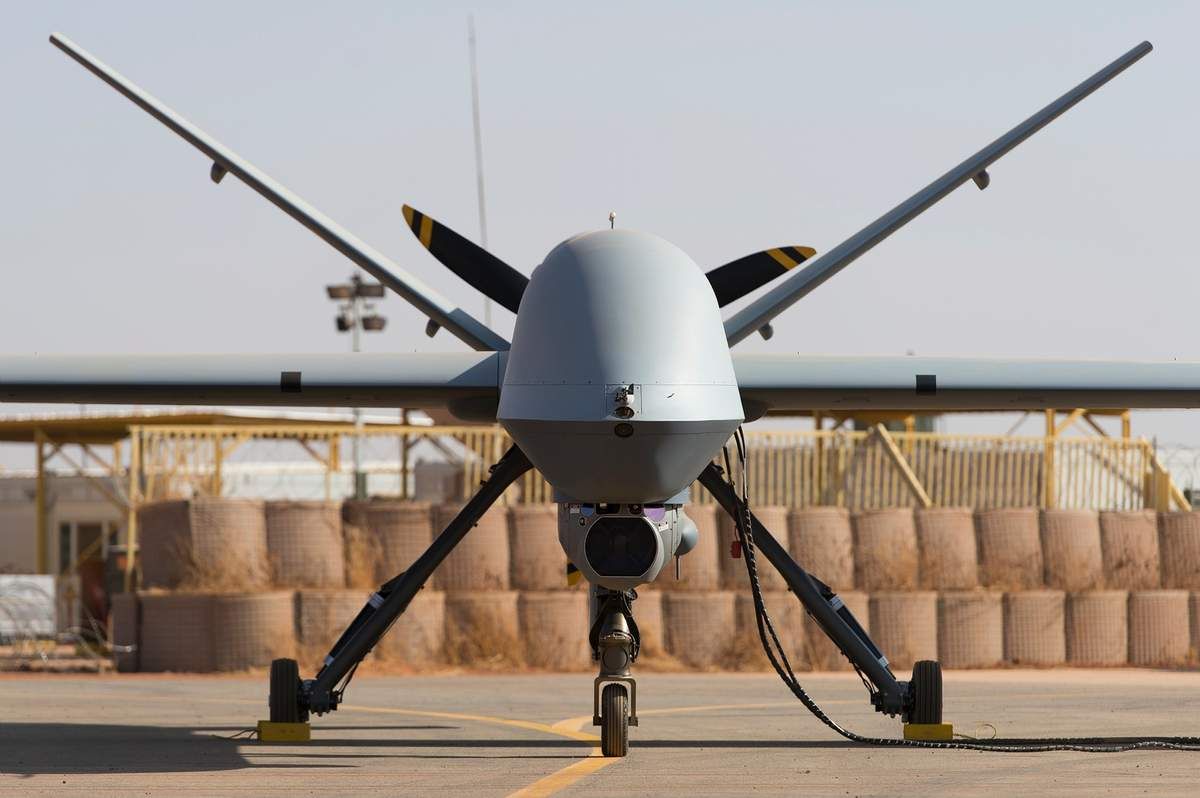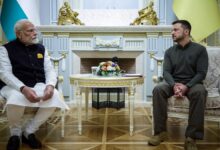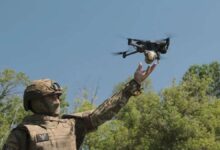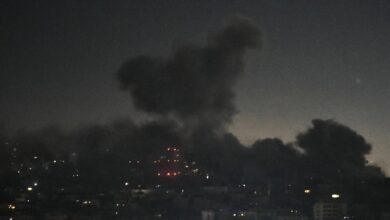America May Provide MQ-9 Reaper Strike Drones To Ukraine

Ukraine is in talks to buy American-made heavy attack drones, which might tip the battle between Russia and Ukraine. Ukrainian officials met with General Atomics, a California-based maker of military drones, including the MQ-9 Reaper, the US Air Force’s principal reconnaissance and strike UAV, last week in Washington.
Though any sale must be approved by the US government, it is improbable that such conversations between Ukraine and a US weapons contractor would have taken place without the Biden administration’s blessing.
C. Mark Brinkley, a spokesman for General Atomics, informed me, “We have planes available today for quick transfer.” “With US government assistance, those planes might be in the hands of Ukrainian military pilots in a matter of days.”
General Atomics has a track record of supplying MQ-9s to other countries fast. “In the past, we’ve worked with the US government to get MQ-9 Reapers to a partner country in under 30 days,” Brinkley added. “The logistics footprint might be very small, far smaller than what people think of when they think about UAS logistics in the United States.”
According to the Washington Post, the Biden administration is already plotting to equip Ukraine with more modern weapons. Fearing that big weaponry like tanks and jet fighters might intensify the conflict, the US has armed Ukraine with smaller weapons like man-portable Javelin anti-tank and Stinger anti-aircraft missiles, as well as small 5-pound Switchblade “kamikaze drones.”
The MQ-9, on the other hand, would be a very other animal. While General Atomics did not specify which versions it may sell, the Reaper, along with the previous MQ-1 Predator, has served as the backbone of American military drone operations for more than two decades.
Drones have emerged as one of Ukraine’s most lethal weapons against Russian tank columns, and the MQ-9 might completely change the battle. The Turkish-made TB-2 Bayraktar has emerged as the surprising hero of Ukraine’s drone fleet.
The TB-2, which Ukraine is thought to have roughly 20 of, is equipped with laser-guided missiles and has destroyed hundreds of Russian tanks, artillery pieces, and anti-aircraft weapons. Despite significant Russian investment in air defence, Russian fighters and anti-aircraft armaments have proven ineffectual against Ukrainian UAVs, including hobby drones converted into observation and assault craft.
Comparing the TB-2 to the MQ-9, on the other hand, is like comparing a Humvee to a passenger sedan. The MQ-9 has a 66-foot wingspan compared to the TB-2’s 39-foot wingspan. When fully laden with fuel and weaponry, the MQ-9 weighs around 11,000 pounds, compared to 1,400 pounds for the TB-2. The Reaper is twice as quick than the TB-2, reaching speeds of over 300 miles per hour vs 135 miles per hour.
The Turkish drone would have to fly close to the front lines in eastern and southern Ukraine, exposing it to Russian air and missile strikes on airfields. The MQ-9, on the other hand, has the range to operate from safer bases in eastern Ukraine: with a distance of 291 miles between Lviv in eastern Ukraine and Kiev in western Ukraine – and 800 miles between Lviv and the southern port of Odessa – the extra range of the Reaper could be crucial in protecting Ukraine’s drone fleet from Russian retaliation. Indeed, the MQ-9 would have the range to attack as far as Moscow in Russia.
Ukraine, according to General Atomics, would profit from more advanced American drones. “They would considerably increase the entire military force’s ISR [intelligence, surveillance, and reconnaissance] capacity and deliver highly lethal strike capabilities not available from smaller combat UAVs,” Brinkley added.
However, the TB-2 has one significant benefit over the MQ-9: it is far less expensive. A TB-2 costs $1 million to $2 million, but a MQ-9 can cost up to $32 million (a $600 million sale of four MQ-9Bs to Taiwan in 2020, including ground stations, spare parts, and training) Smaller nations like Azerbaijan, which utilised the TB-2 to demolish Armenian armour in the 2020 Nagorno-Karabakh war, see this as a huge plus.
However, if the United States is ready to foot the bill, the MQ-9 provides Ukraine with significantly more capabilities.
Any Ukrainian MQ-9 acquisition, however, will face challenges. The most evident is training and familiarisation: the Ukrainian military is used to operating Russian (really Soviet-era) rather than Western-designed equipment, while the US Air Force needs UAV pilots to complete a year of training.
General Atomics, on the other hand, is confident in its ability to promptly train Ukrainian crews. “We could swiftly educate military pilots who are already experienced with UAV operations to operate our aircraft,” Brinkley added.
“Every public estimate currently being made by observers regarding logistics footprints and training timetables is based on how the United States military deploys the aircraft in the best-case scenario.” Rapid training and deployment initiatives in a situation like this might drastically reduce such estimations and footprints.”
“Ukraine has skilled military pilots who are familiar with UAV operations and are eager to defend and safeguard their homeland,” Brinkley noted. “We’re not starting from the beginning.”
Another point to consider is survivability. While Russian air defences have been incredibly unsuccessful against drones, armies eventually adapt, according to history. The MQ-9 has so far been employed in locations where the enemy’s air defences are weak, such as Afghanistan, Iraq, and Syria. Supersonic Russian jet fighters against slow-moving drones might be a problem if handled properly.
Drones, on the other hand, have emerged as a plague for the Russian army, which relies on tanks and artillery to keep its onslaught going. Even a small number of US-made heavy attack drones operated by dedicated Ukrainian pilots could give the outmanned and outgunned Ukrainians the crucial advantage they require.







Facebook Comments